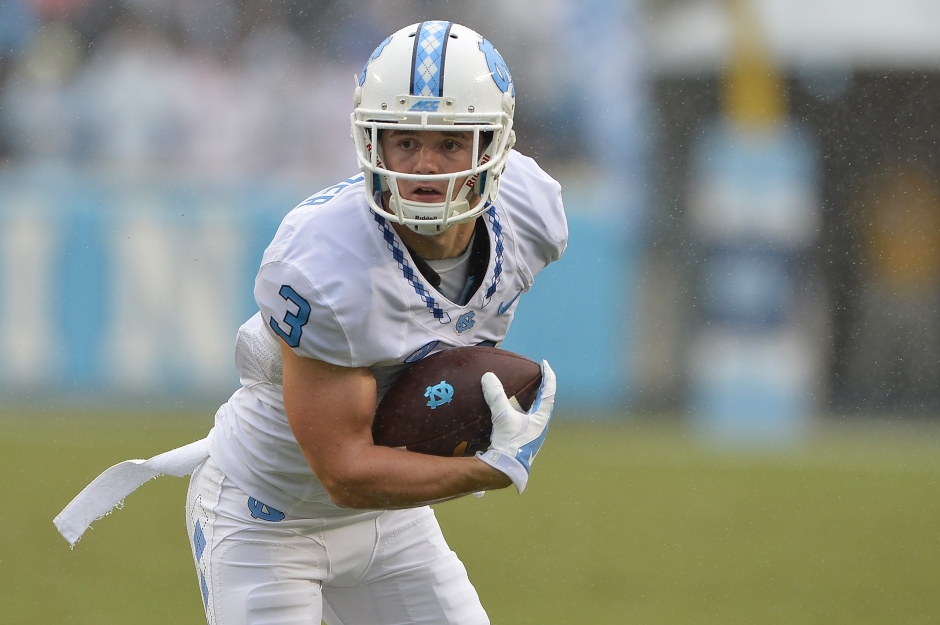By John Camera
If you’ve seen my draft profiles on Carson Wentz and Jared Goff, you’ll know that my opinions on them as the top two quarterbacks in the 2016 draft were very strong. Yes, I agreed they were probably the best of the bunch, but still, I thought that wasn’t saying much. To me draft media was hyping up these two because the narrative behind the NFL Draft is so much more interesting when franchise QBs are involved. In addition to the media, my thinking was that General Managers who felt the need for a young QB who can guide their team to success would artificially inflate the value of those who are the closest thing to that.
I thought Wentz and Goff were both second round picks, guys who would need significant time before a team got their return on investment. And there was nothing wrong with that; Derek Carr and Jimmy Garoppolo were second round picks and Teddy Bridgewater was picked 32nd overall. I believed that taking them early in the first, much less numbers one and two overall, was a huge mistake. And their rookie seasons proved me right more or less. Wentz started hot with a lot of easy reads and simple throws and cooled off quickly once defensive coordinators figured out how to stop him. Goff was terrible as soon as he got into the lineup, unable to get the ball downfield and lacking good pocket presence. In their sophomore seasons, a lot has changed, and while it is still early to say what their career path will be, Wentz is 24 and Goff is 23, we are getting a firm idea of they are capable of.
Starting with the number one overall pick, I felt Goff would be woefully unprepared to make a switch from a college spread system to a more conservative NFL attack, especially one under someone so notably unimaginative as head coach Jeff Fisher. More importantly, I had major concerns with his accuracy. On his throws more than 10 yards downfield, I did not see consistent touch and accuracy. Goff threw wide of his targets quite often at Cal, making his receivers work extra hard to grab his passes and sometimes getting them killed when throwing them into coverage, like throwing them directly into the path of a safety coming downhill. I also thought his footwork and pocket presence left something to be desired. All of these issues were prevalent in his rookie year, where Goff struggled to do anything positive and talk of Sean Mannion replacing him was no longer a whisper in the 2017 offseason.
Rookie Head Coach Sean McVay has a lot to do with Goff’s development into a competent Quarterback this year, as the Cal product has gotten significantly better in the all the areas that I had issues with previously. His accuracy in particular has take a huge step forward that is simply unusual for most QBs. Accuracy is a big thing to try and change and for Goff to be able to do so should earn him a lot of credit. The addition of weapons like Robert Woods, Sammy Watkins and Gerald Everett was also critical but no acquisition was more offense-changing than Left Tackle Andrew Whitworth. Look no further to the success of Goff as compared to Andy Dalton, Whitworth’s old QB. It goes to show what a real, effective coach and a retooled offense can do for a young QB who experiences turmoil in his first season.
Wentz on the other hand had a rookie season with a lot of promise. He looked pretty good despite a limited preseason and an offense that was largely devoid of weapons at WR and RB. I was largely skeptical of Wentz because of how defensive coordinators were able to shut him down in the second half of the season when they adjusted to the Eagles’ somewhat conservative offense. However, it is foolish to deny Wentz’ ability and play-making acumen any longer. He is clearly an excellent young QB and could be the next great star at the position. He is having an MVP caliber year so far, guiding the Eagles to 9-1 while putting up the most passing TDs in the league. Wentz has improved in every area from his rookie to sophomore year; decision making, pocket presence, accuracy at all levels of the field, timing and footwork. Coming out of North Dakota State, I feared that Wentz’ poor footwork, inconsistency in reading through his progressions and especially his uneven pocket presence (noting how badly his accuracy degraded under pressure and his penchant for holding the ball too long) could be his undoing at the next level.
All of these weakness cropped up in Wentz’ first season and while not a reason to call him a bust, I was not ready to consider him undeniably and eventually great. This season, however, he has been great, issues coming up here and there but more often than not Wentz has been simply spectacular. And just like Goff, an influx of weapons like Jay Ajayi, LeGarrette Blount and Alshon Jeffrey has also helped make Wentz a better and more consistent QB.
It’s important to remember that we can’t account for everything when scouting players, especially a complex position like QB. We don’t know what the player’s work ethic is like, their film study acumen, how well they respond to coaching, and how well the team they will go to coaches’ are. Scouting as an outsider can very much be a “best guess” based on what is seen on tape and scouting reports that end up erroneous are impossible to escape. As long as the reason why they were wrong is understood, we can learn from past scouting mistakes and make better judgments in the future.











